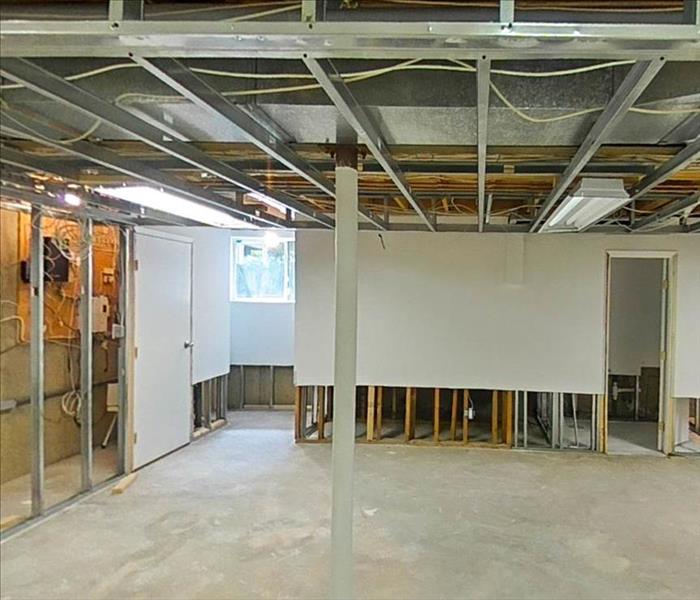Sewage Cleanup Dos and Don'ts: Expert Advice for Homeowners
7/25/2023 (Permalink)
Dealing with a sewage backup can be one of the most distressing experiences for homeowners. Besides the foul odor and unsightly mess, sewage backups pose serious risks if not handled properly. When faced with such a situation, knowing the right steps to take and what to avoid can make all the difference in minimizing damage and protecting your well-being. In this blog, we will provide expert advice on sewage cleanup dos and don'ts, empowering homeowners to tackle this challenging issue safely and efficiently.
1. DO Prioritize Safety
Your safety and the safety of your family should be the top priority during sewage cleanup. Sewage water is highly contaminated and may contain harmful bacteria and pathogens. Always wear appropriate protective gear, such as waterproof gloves, boots, and eye protection, before entering the affected area.
2. DON'T Delay Cleanup
Act promptly when you encounter a sewage backup. Delaying cleanup can exacerbate the damage and increase the risk of mold growth and further contamination. The longer sewage water sits in your home, the more difficult and costly the cleanup process becomes.
3. DO Turn Off Utilities
If it is safe to do so, turn off the electricity and gas supply to the affected area to avoid potential electrical hazards and gas leaks.
4. DON'T Use Household Cleaners
Avoid using regular household cleaners for sewage cleanup. They are not effective in eliminating sewage-related contaminants, and mixing them with sewage can create harmful fumes. Instead, rely on professional-grade disinfectants and cleaning agents.
5. DO Ventilate the Area
Open windows and use fans to improve ventilation in the affected area. Adequate airflow helps in drying out the space and reducing the risk of mold growth.
6. DON'T Use Air Circulation from the Affected Area
Avoid using fans or air conditioning that circulate air from the sewage-affected area to other parts of your home. This can spread contaminants and pose health risks.
7. DO Remove Standing Water
Use a wet-dry vacuum or pumps to remove standing sewage water from your home. Dispose of the water in a proper sewage disposal site.
8. DON'T Ignore Absorbent Materials
Avoid salvaging absorbent materials like carpets, padding, and upholstered furniture that have been contaminated by sewage. These materials are challenging to clean thoroughly and can become breeding grounds for bacteria and mold.
9. DO Disinfect and Sanitize
Thoroughly disinfect and sanitize all affected surfaces and items using appropriate cleaning agents. This step is crucial in eliminating harmful bacteria and preventing the spread of diseases.
10. DON'T Hesitate to Seek Professional Help
Sewage cleanup is a complex and hazardous task that requires specialized expertise and equipment. If you are unsure about handling the cleanup yourself or if the extent of the damage is significant, don't hesitate to contact a professional sewage cleanup and restoration service like SERVPRO of Northern Queens.
Sewage cleanup is a challenging process that demands careful attention and adherence to safety guidelines. By following the dos and don'ts provided by experts, homeowners can minimize damage and health risks associated with sewage backups. Remember, safety comes first, and seeking professional assistance ensures a thorough and efficient cleanup, helping you restore your home to a safe and habitable condition. If faced with a sewage backup, take immediate action and approach the cleanup process diligently to protect both your property and your family's well-being.


 24/7 Emergency Service
24/7 Emergency Service
